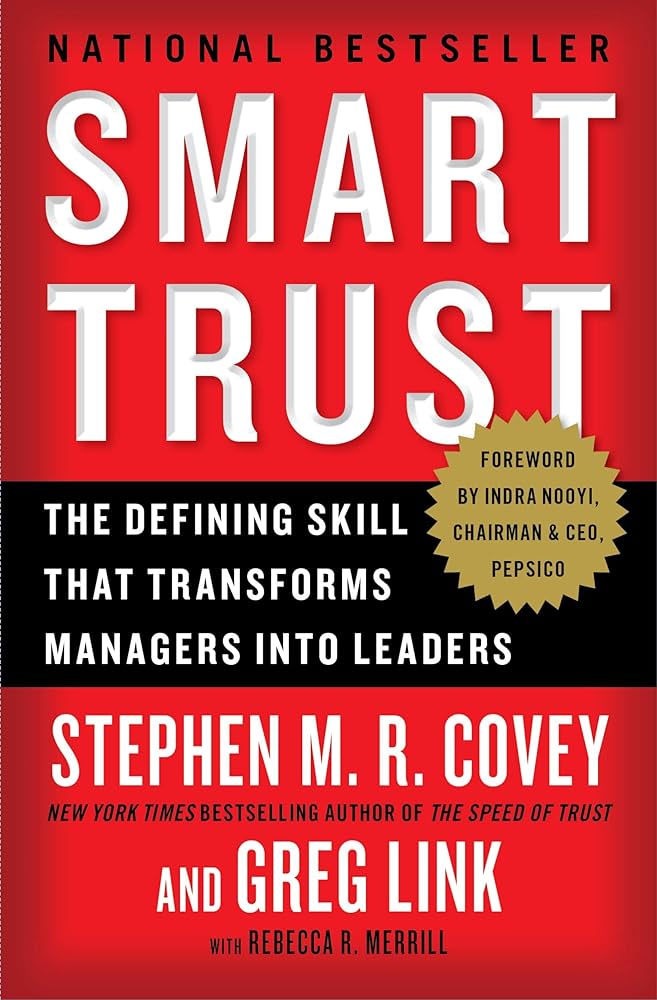One of the mind-numbing miseries of organizational work is the time spent in meetings. Atlassian, an Australian enterprise software company, provides the following estimates from various sources:
- Most employees attend 62 meetings/month (staggering) and half the meetings are considered time wasted
- Regarding the average meeting attendee:
- 91% have daydreamed during meetings
- 39% have slept during meetings
- 45% felt overwhelmed by the number of meetings attended
- 73% did other work during meetings
- 47% felt that meetings were their #1 time wasters at the office
I’m sure you have felt the tedious waste of time and money as some pointless meetings drone on with people off on tangents while others are tuned out. I’ve had more than my fair share of miserable meetings too, so here are dozens of tips for how you can conduct and participate in high-quality meetings.
1. Behavior. Collaboratively set norms for all meetings that are consistent with the organization’s shared values. When leaders allow dysfunctional behaviors inconsistent with the shared values or norms, people become cynical. Norms might be: arrive and leave on time, stay on topic, everyone speaks up, and more.
2. Beforehand. Send important material to participants in advance and request they read it and prepare for the meeting. It’s a waste of time to review material in the meeting that should have been digested beforehand.
3. Size. Consider carefully who should be at the meeting. The ideal group size for decision-making is seven or less. Don’t invite everyone just so they can be informed. Brief them later via notes or in person.
4. Ownership. Be clear the quality of the meeting belongs to everyone, not just the meeting leader. If something is off-track, all are empowered to speak up constructively.
5. Discipline. Insist on meeting discipline, ensuring focus and enforcing boundaries. Use an agenda, with flexible time blocks on the agenda items, and have clear start and stop times. If someone is late, don’t review what’s been covered just for him or her.
6. Purpose. Have clear meeting objectives, such as to share information, make a decision, or brainstorm ideas to solve a problem.
7. Process. Define a process for the meeting to avoid letting the meeting format wander randomly. For example, for a brainstorming meeting: everybody comments on their perspective of the problem, then brainstorming with no critiques, then deciding on the best ideas, then ideas for implementation, and finally around-the-table checkout on meeting quality.
8. On-Point. Keep the dialogue on topic. Place other ideas or issues into a “parking lot” for subsequent follow-up. Don’t let people talk in generalities or go off on tangents.
9. Reality. Stay in reality with a focus on results. Leaders face reality, so don’t pretend everything is fine when it’s not.
10. Creativity. Offer creative solutions to problems without wallowing or being negative to new ideas.
11. Constructive. Be open to input and humble with your own comments. Avoid being authoritative, egotistical, disrespectful, or defensive.
12. Be There. Be present and engaged, arriving early, listening deeply, participating actively, and making sure your body language is open and welcoming.

Leadership Derailers Assessment
Take this assessment to identify what’s inhibiting your leadership effectiveness. It will help you develop self-awareness and identify ways to improve your leadership.
13. Share. Share your stories and experiences if they are on-point.
14. Respect Differences. Other people are not just like you. Recognize there are different personality, participation, and leadership styles. Those differences can drive innovation when channeled effectively.
15. Inclusiveness. Use “we” and “us” often. Avoid over-use of “I,” “you,” “them,” or “they.”
16. Trust. Trust smartly by extending some trust to others, and then build more or less trust from there based on behavior. Don’t assume others are untrustworthy or trust blindly in people you don’t know well. Start building trust by trusting smartly. (See Stephen M.R. Covey’s excellent book, Smart Trust.)

17. Build. Acknowledge others by building on their ideas, especially the speaker right before you. Ignoring the comments of others or interrupting others is not conducive to good meetings.
18. Apologize. If you are wrong, say you are sorry and admit you made a mistake. Genuine apologies can mend fences and restore trust.
19. Support. Praise others warmly. Try saying, “yes and …,” where you acknowledge what’s good or unique in an idea and then build on it. Avoid “no but…” Attacking and criticizing others doesn’t help your meeting. If you have constructive feedback for someone, offer it in private if you feel they are open to it.
20. Emotional Control. Be aware of your emotions and in control of them. Your emotional intelligence (EQ) is more important than your intelligence quotient (IQ).
21. Project. Project yourself constructively and confidently to others without being egotistical or arrogant and, certainly, without marginalizing or demeaning yourself or others. Leadership presence is more important than many realize.
22. Persist. Continue to make your point, rephrased if possible, if you feel strongly about it, but do it respectfully, constructively, and without personalizing it. Dysfunctional meeting behaviors include mentally quitting, checking out, giving in, avoiding conflict, or becoming passive-aggressive if your views are not agreed with.
23. Share. Give information willingly to others. Hoarding information won’t help people reach sound conclusions or form a high-performance team.
24. Positives. Celebrate the positives in any situation. Pessimism doesn’t inspire people, and people who work hard sometimes need to stop and reflect on progress to motivate them for the challenges ahead. Don’t take people for granted.

Personal Values Exercise
Complete this exercise to identify your personal values. It will help you develop self-awareness, including clarity about what’s most important to you in life and work, and serve as a safe harbor for you to return to when things are tough.
25. Unleashing. Let others lead at times, even those without authority, and even if you are the meeting leader. You shouldn’t try to tightly control the discussion. Proactively ask people for their views, and expect their creativity, engagement, and leadership.
26. Help. Offer to help others. “That’s not my job” is a phrase that kills collaboration and excellence.
27. Loyalty. Support those not present to defend themselves. Criticizing those absent destroys trust because people wonder what you are saying about them behind their backs.
28. Clarity. Organize your thoughts before you speak to be clear about your facts and state your opinion or conclusion.
29. Personal Accountability. Accept your responsibility to deliver on your commitments without offering lame excuses or scapegoating others.
30. Team Accountability. Hold others to their commitments. You can be constructive in your language without letting others off the hook.
31. Bridge. Factions are natural in any group. Seek ways to bridge them, and don’t stay in your role or faction too long, refusing to see the views of others.
32. Consensus. Seek general accord on an issue through a “straw vote” and ask if the objectors can live with the solution. If they can, you can move on: their objections have been heard. If they can’t live with the solution, continue seeking consensus. Don’t ram your solution forward, or force a majority vote, if some people feel the issue is a deal-breaker. The dissenters will sabotage the result.
33. Summarize. Use a whiteboard or flip charts to capture key points visually and illustrate issues. You risk losing key ideas, suggestions, or next steps if they are merely verbalized.
34. Synthesize. Take input and blend it into solutions that succinctly capture the essence of the inputs.

Alignment Scorecard
When organizations aren’t aligned, it can reduce performance dramatically and cause frustration and dysfunction. With this Alignment Scorecard, you can assess your organization’s level of alignment and make plans for improving it.
35. Action Plans. Define clear next steps for the whole group to see “who will do what by when” and publicize them after the session. Leaving the meeting with no recorded action plans is a guarantee that you have wasted time.
36. Support. Uphold the group’s decision, even if you voiced your disagreement. Undermining the group’s decision by muttering outside the meeting makes you a saboteur.
37. Checkout. At the conclusion, go around the table getting a brief comment from each participant on the quality of the meeting. Leaving the session without feedback on the meeting’s effectiveness means you will not hear ways to improve the meeting’s usefulness.
Core Concept
Holding constructive and effective meetings takes planning, practice, intention, and discipline. And it pays great dividends.
-Bob Vanourek
Co-author, Triple Crown Leadership: Building Excellent, Ethical, and Enduring Organizations
Tools for You
- Leadership Derailers Assessment to help you identify what’s inhibiting your leadership effectiveness
- Personal Values Exercise to help you determine and clarify what’s most important to you
- Alignment Scorecard to help you assess your organization’s level of alignment

Triple Crown Leadership Newsletter
Join our community. Sign up now and get our monthly inspirations (new articles, announcements, opportunities, resources, and more). Welcome!
+++++++++++++++++++++++
Gregg Vanourek and Bob Vanourek are leadership practitioners, teachers, and award-winning authors (and son and father). They are co-authors of Triple Crown Leadership: Building Excellent, Ethical, and Enduring Organizations, a winner of the International Book Awards. Check out their Leadership Derailers Assessment or get their monthly newsletter. If you found value in this, please forward it to a friend. Every little bit helps!

